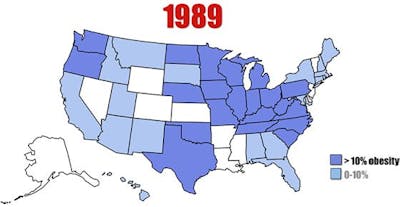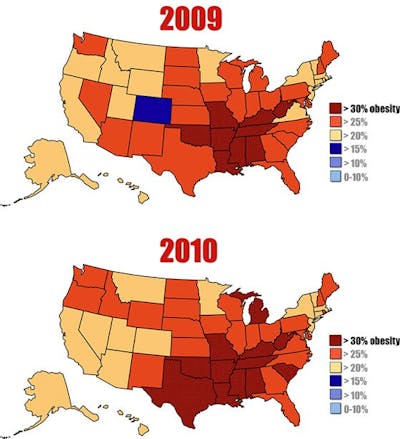The American obesity epidemic 1989 – 2010

Here is the obesity prevalence in the USA in 1989, as the modern obesity epidemic was just getting started. A few years earlier the fear of fat had gripped the nation, and eating carbohydrates instead was the solution.
Two short decades later, in 2009, the official obesity statistics had changed beyond all recognition. And every year there is a new record. Just recently the numbers for 2010 was released. Do you want to see them?
The epidemic



The disaster is just getting worse. Despite that, the conventional wisdom is to keep doing the exact same thing. The old fear of fat lives on, even though the science behind it is dead. The solution to the obesity epidemic is said to be just “eating less and running more”.
That advice that has been demonstrated to be the least effective in at least thirteen scientific studies of the highest quality. That advice have already failed during the last two decades. Why? Nobody likes being hungry.
Do you have any ideas on how to change things?
More
LCHF for beginners – Weight loss without hunger
Weight loss and LC: Time to stop denying the science
How to lose 196 pounds without hunger